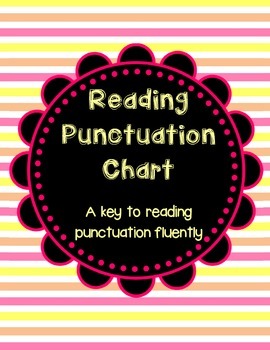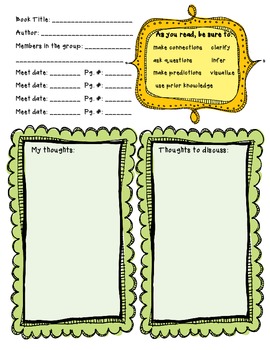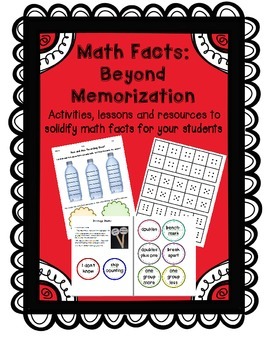I used dry erase markers on our tiled wall in the hall to write positive traits about my students, and they loved reading them every time we walked by! Honestly, I think it brightened the day of all of us!
Feb 28, 2015
Positivity Wall
My kids were incredibly well-behaved on a field trip last week, so the next day, this happened.
Feb 24, 2015
Feb 21, 2015
Engage(NY) in Fractions
February was the month we started our fractions unit and I am so excited! I know, weird considering several of the fraction standards are written in Greek. Well, technically math language, but isn't it the same thing?
This time around I've been using EngageNY's modules to supplement my own activities and it's brought up some really deep math discussions. I love the selection of fraction amounts they use in the problems that surface common misconceptions, and I love the fact it uses effective models like tape diagrams and number lines. And the best part is that it's done. Curriculum that actually fits with the way I'd teach, that has everything ready to go. What every teacher needs.
Here's a video I made recently explaining in 3 min. or less the concept of adding fractions that have a sum greater than one.
This time around I've been using EngageNY's modules to supplement my own activities and it's brought up some really deep math discussions. I love the selection of fraction amounts they use in the problems that surface common misconceptions, and I love the fact it uses effective models like tape diagrams and number lines. And the best part is that it's done. Curriculum that actually fits with the way I'd teach, that has everything ready to go. What every teacher needs.
Here's a video I made recently explaining in 3 min. or less the concept of adding fractions that have a sum greater than one.
Sep 29, 2014
"One More" Math Fact Strategy
This year I started things off with a unit on math facts and I loved it! Our strategies include: one (group) more, one (group) less, benchmark numbers, doubles, doubles plus one, and break apart (like breaking a 7 into a 5 and 2 to multiply). A lot of the strategies fit with other concepts like multi-digit addition, subtraction, multiplication and even division. We worked on strategies for solving math facts in place of memorization. Only one third of kids can memorize easily, yet teachers often keep pounding on the same learning style hoping something will change with the child. So below is one of the things I did differently this year. (Check out my Math Fact unit on tPt). Here's a part of a lesson showing the strategy of "one group more" or "one group less" using graph paper and arrays.
The Process:
(mathematical thinking questions included in the photos)
(mathematical thinking questions included in the photos)
This activity also uses graph paper, but it shows the "doubling and halving" strategy for solving math facts. For example, if the student knows the math fact 3x8 they can double it to find the product of 6x8, a much harder math fact to solve.
On graph paper, have your child draw and shade a 2x2 array (color two squares across and two squares down). Ask them what shape was made (a square) and what the area is inside (4 squares); this is a tie-in to area and measurement.
On top of the 2x2 array, have your child draw and shade a 4x4 array. Part of the larger array should overlap the smaller array. If you want to, you can ask the questions shown in the picture.
Notice how well the student is able to communicate their mathematical thinking and how clearly they can relate their ideas. Do they understand that doubling both numbers in the equation doubles both the length and the width of the shape, which actually quadruples the product? Can they figure out a math fact equation that would be double 4x7? Are they able to apply this strategy to other math facts?
Labels:
Common Core,
Critical Thinking,
Math,
Math Facts,
Multiplication,
Number Sense
Sep 20, 2014
The Endless Math Facts Battle
You know how in teaching you have to pick your battles? Well this past summer, math facts became one of the battles I picked. Aaannd, this is why... Ever had this conversation?
"I practiced math facts with my kids all. year. long. We worked hard and they knew them by the end of the year. I don't know why they don't know it for you."
Year after year I felt like I keep drilling the math facts. Playing the games. Using technology to practice. Getting parent volunteers to do flashcards. Sending home math facts activities. And still it seemed like a relentless pursuit of learning that doesn't even last.
But then I came across this article from "Teaching Children Mathematics", published by NCTM in the April 2014 issue.
Oh. my. gosh. I love it! It made me see the ridiculousness in what I was doing. In no other area of teaching do I give the kids a timed test, then pull out flashcards and rote memorization tools, and then give them another timed test on the same concept a week or two later. No wonder that wasn't working. Because we know that what works in teaching is developing the concept, building strategies and understanding, reteaching and explaining in different ways. Most of the time, I teach other math concepts in a concrete-pictorial-abstract model, giving support along the way. I decided to do the same with math facts and after doing some math education research, I created this Math Fact: Beyond Memorization unit. Of course, this is only a small sample, but you can get all 90 pages of it at my tPt store.
"I practiced math facts with my kids all. year. long. We worked hard and they knew them by the end of the year. I don't know why they don't know it for you."
Year after year I felt like I keep drilling the math facts. Playing the games. Using technology to practice. Getting parent volunteers to do flashcards. Sending home math facts activities. And still it seemed like a relentless pursuit of learning that doesn't even last.
But then I came across this article from "Teaching Children Mathematics", published by NCTM in the April 2014 issue.
Oh. my. gosh. I love it! It made me see the ridiculousness in what I was doing. In no other area of teaching do I give the kids a timed test, then pull out flashcards and rote memorization tools, and then give them another timed test on the same concept a week or two later. No wonder that wasn't working. Because we know that what works in teaching is developing the concept, building strategies and understanding, reteaching and explaining in different ways. Most of the time, I teach other math concepts in a concrete-pictorial-abstract model, giving support along the way. I decided to do the same with math facts and after doing some math education research, I created this Math Fact: Beyond Memorization unit. Of course, this is only a small sample, but you can get all 90 pages of it at my tPt store.
Labels:
Assessment,
Common Core,
Math,
Multiplication,
Number Sense,
Printable
Sep 6, 2014
No More Nametags!
The day I got rid of nametags on the desk was the day I regained a piece of my sanity! No more peeling tape. No more distracted kids playing with the corners. And no more scrubbing of that hard-to-get-off sticky residue that can send any teacher to a nice padded room with a leather reclining couch. So the solution is...wet erase markers! On the first day, my students are able to choose their own desk. (see post here) When they do, they write their name decoratively with wet erase marker at the top of their desk. This gives me time to organize classroom supplies, collect school forms, talk to students and do all the other things that pop up within the first 10 min. of the first day of school.
This form of nametagging makes it easy to change, the kids love it and I don't have any more battles with tape residue (wait, did I mention that already?). No more paper nametags-and I'll never go back.
This form of nametagging makes it easy to change, the kids love it and I don't have any more battles with tape residue (wait, did I mention that already?). No more paper nametags-and I'll never go back.
Aug 29, 2014
Fabulous Finds Friday: EngageNY
Have you heard of this amazing website full of resources and lessons and other fabulous goodies? If you haven't, you have to check it out. Like, now. Go ahead, click the link. I'll wait here.
Now if you're anything like me, you probably just spent 3 hours, easily, hopping from resource to resource and downloading things like crazy. In case you didn't find them yourself, here are some of my favorites:
Math Strategies video library-thinking of sending some of these strategy videos to parents of struggling kids
Background on Common Core (since there are a lot of misconceptions floating around out there)
Data Driven Instruction resources - I loved Paul Bambrick-Santoyo's book by the same name
Common Core Curriculum Modules - just discovered these this summer and they've become my go-to already!
Don't get too lost out there in cyber NY!
Now if you're anything like me, you probably just spent 3 hours, easily, hopping from resource to resource and downloading things like crazy. In case you didn't find them yourself, here are some of my favorites:
Math Strategies video library-thinking of sending some of these strategy videos to parents of struggling kids
Background on Common Core (since there are a lot of misconceptions floating around out there)
Data Driven Instruction resources - I loved Paul Bambrick-Santoyo's book by the same name
Common Core Curriculum Modules - just discovered these this summer and they've become my go-to already!
Don't get too lost out there in cyber NY!
Aug 13, 2014
Before You Enter - First Day Agreements
And while those eager little faces are looking up at me, I kindly explain to them how important my classroom is to me. It's where I spend half of my time, I tell them. It's my second home, I say. It's where I can go and feel safe, both emotionally and physically cared for, and I want them to feel the same (cue the Kleenex, as I always seem to tear up here). I explain how important it is to me that my classroom stay upbeat and positive, that it be a place where all of us can safely take risks, try things we're not good at and make all kinds of mistakes. In our classroom that can only be done with full positivity. We have to support each other, encourage each other and help each other. Because when it comes down to it, throughout the school, we're all we've got, we're a team and teams have to stick together (okay, slightly overdramatized, but the tears always well up at this point too). And then I lean forward in my chair and ask them The Big Question: Can you agree to that? Can agree to be kind? Can you agree to be positive and not say negative things? Will you agree to help others feel cared for, both their emotions and their body? Can you agree to make our classroom the best place ever? If you agree to this, will you show your commitment by shaking my hand, introducing yourself to me and then entering our special classroom. At this point, and only at this point, I open my classroom door to them. And these cute little kids transform from spazzy, excited, bouncing children to eager, respectful, grounded children ready to start the year off right.
In 8 years of doing this, I've only had one student ever choose not to agree. So...what to do? Well, students had already been given the direction to hang up their backpack in the back, choose a desk and draw their name on it (see post here) and then sit on our colored rug. Choosing and labeling a desk, alone, usually takes them a good 15 min., which gave me time to pop back out in the hall and talk to this student. I asked him why he felt uncomfortable with our agreements and he shared with me concerns about his behavior in past years. He said he always seemed to get in trouble for talking out and didn't know how to control it, so he knew he couldn't agree to be his best. *My heart broke.* But I'm so glad I knew this within the first 10 min. of the first day of school. We quickly agreed to create a behavior plan together and I assured him that I would do all I could to help and support him, as long as he continued to try again each new day. This he could agree to. I asked if he could be kind to the other kids and help them when he saw a need. This he could also agree to. So after a short 3-min chat we both felt great about him being in our class and getting a fresh start.
This is all outside the box, I know. People look at us curiously as they walk down the hall that morning, and other teachers ask me what I'm doing for so long after the bell, sitting in the hall with my kids. And I'm excited to tell them all about the team-like feeling we have from the first moments, and how caring all my kids were to each other from the very first day. I love it. This is the best way to start our year together, all on the same page.
*The key to this is my own genuine, heart-felt expression of what I picture our classroom environment to be. The children can sense the sincerity in my tone and are able to buy in because they know I believe this myself. No lecture, no stern face - just speaking wholeheartedly person to person, with respect.
Labels:
Back To School,
Behavior,
Classroom,
Management
Aug 7, 2014
And we're back...
I can't believe it's the end of the summer already. I mean, really? How does February always feel like two months and summer feel like 2 weeks? I believe that's what Einstein was really referring to when he said time was relative.
This was the first year I wasn't in the classroom throughout the summer. Yes, I can hear the applause from all the people in my life. It helped that I started off the summer doing week-long math trainings for Utah's Core Academy. I was out of town (and thereby away from the school) for them and, funny enough, distance did not make my heart grow fonder. Instead, I spent the time - school-wise - doing a lot of research, taking university classes and writing higher-quality lessons and tests. It was invigorating! I'm so excited to get in and try the great things I've learned and created this summer. Of course, I'm not ready to give up my last week of sleeping in and vacation time, but I'm definitely looking forward to teaching this school year. And we're back...
This was the first year I wasn't in the classroom throughout the summer. Yes, I can hear the applause from all the people in my life. It helped that I started off the summer doing week-long math trainings for Utah's Core Academy. I was out of town (and thereby away from the school) for them and, funny enough, distance did not make my heart grow fonder. Instead, I spent the time - school-wise - doing a lot of research, taking university classes and writing higher-quality lessons and tests. It was invigorating! I'm so excited to get in and try the great things I've learned and created this summer. Of course, I'm not ready to give up my last week of sleeping in and vacation time, but I'm definitely looking forward to teaching this school year. And we're back...
Dec 13, 2013
Fabulous Find Friday: Flip Cap problems

I loved this idea I found from Tabitha Carro over at Flap Jack Educational Resources. Seeing it was one of those "why didn't I think of that" moments! But now that I've seen it...there are so many ways to adapt this simple premise. I'm thinking multiplication facts, parts of speech practice, synonyms, equivalent fractions, number of shape angles, measurement equivalencies...the options seem endless. What would you use it for?
Subscribe to:
Comments (Atom)










